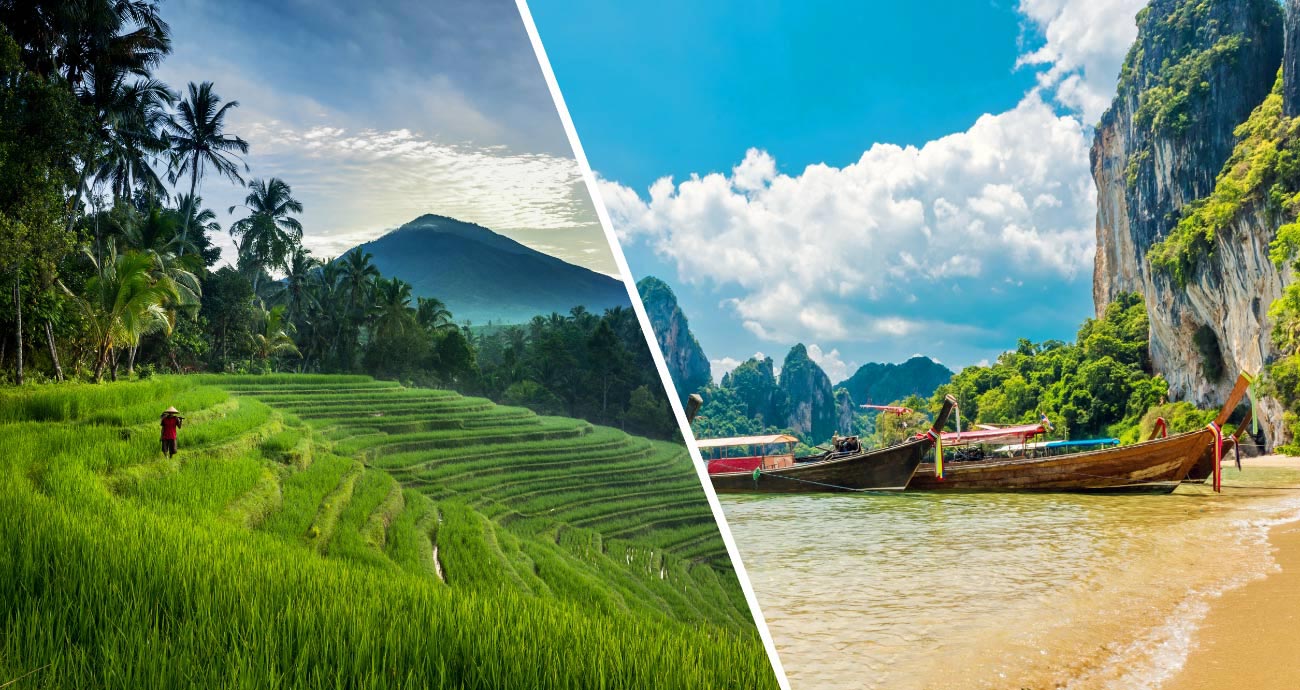Asia’s abundance in natural beauty makes it a mecca of paradisal destinations and has people from around the world listing them on their bucket lists. Two of the world’s most gorgeous coastal getaways are found in Phuket and Bali, and it comes as no surprise. Their rich landscape, mouth-watering cuisine, and warm hospitality are enough reasons to lure travelers and leave them coming back for more.
The goal of this guide is not to pick which is a better destination, but rather to highlight their similarities, differences and their strengths which will hopefully get you closer to your dream holiday destination.
An overview of Phuket and Bali
Phuket prides itself as a luxury destination, thanks to its top-notch destinations and excellent accommodation, entertainment and dining options. Its marinas make it a popular choice for yachting and boat tours that lets you explore Phuket’s seascape and surrounding islands. People visiting Phuket are often mesmerized by its vistas, with its white-sand beaches, turquoise waters, and lush forests. Apart from its rich flora, the island’s vibrant nightlife headlines Phuket. It has an incredible array of bars, beach clubs, pubs, and attractions that encompass Thailand’s traditional and modern sensibilities.
Bali is Indonesia’s leading tourist destination from its more than 17,000 islands—home to a UNESCO World Heritage site and is characterized by its rich biodiversity. The island is known for its dynamic sceneries and its deep culture and heritage. Its coast features gorgeous beaches perfect for surfing. Moving inland, you’ll find ancient temples and rustic villages surrounded by rice fields and tropical forests that offer a different side of Bali. Shrouded by mysticism and spirituality, travelers visit to recharge their senses, embracing Bali’s serene beauty. On the other hand, Cosmopolitan Bali offers world-class entertainment and shopping experiences with its beach clubs and bars.
In what ways are they similar?
Beaches
Both being tropical destinations, Bali and Phuket’s coastline are blessed with idyllic beaches. With over 40 to choose from, Phuket has many beaches from secluded coves to beaches with upscale beach clubs, there is absolutely something for everyone. Kamala Beach on the Western coast is a quiet stretch of white sand and clear waters. Located along ‘Millionaires Mile’, this enclave is where the some of most lavish holiday villas in Phuket can be found.
Patong Beach, in contrast, is a tourist paradise. Quite possibly the most popular and famous beach in Phuket. This 3-kilometer stretch offers plenty of activities day and night, if you don’t mind the crowd. Another beautiful beach on Phuket’s celebrated West coast is Mai Khao. This secluded 11km beach can be found on the island’s underdeveloped northwest within the Sirinat National Park and is perfect for long beach walks and quiet picnics – the ideal mix of nature and relaxation.
Meanwhile, Bali’s southern shoreline boasts numerous beaches to visit whether you’re looking to go on a salty swim, hit the surf or simply soak up the rays for that sun-kissed look.
Popularly known as the romantic location of the Hollywood adaptation of “Eat, Pray, Love”, Padang Padang Beach in the southwest is a stunning cove with soft white sand, calm waters, dramatic rock formations and limestone cliffs. On the opposite side of the island lies Nusa Dua beach, one of Bali’s best surfing spots. It is known to have clean and consistent waves for surfers of all levels. A short 30-minute boat trip to a small island Southeast of Bali’s mainland brings you to Nusa Lembongan. The picturesque island is home to some of Bali’s most spectacular beaches, most notably Dream Beach.
Shopping
Fantastic finds that would satisfy any shopaholic can be had from both destinations. Shopping in Phuket is a breezy affair for many tourists who have been to the island destination. You can almost buy anything you want in any of Phuket’s many shopping scenes. From handcrafted jewelry to artisanal goods, to vintage and antique pieces, shops have them aplenty.
Phuket’s night markets, bazaars, and street stalls usually provide a wide array of products with a stamp of high-quality craftsmanship that local artisans are best known for. On the other hand, Phuket Old Town and Walking Street in Thalang Road give you an impression of local culture and serves as a depository of beautiful textiles from all around the country.
Bali is no different. It is a treasure trove of cheap deals and great bargains, as long as you know where to find them. It has the right balance of high-end shops with familiar labels you can visit in swanky districts and traditional shops offering affordable prices for anything you wish to buy.
The island’s busy markets offer ornate jewelry, handicrafts, woven and dyed fabrics, and even indigenous textiles from around Indonesia and its neighboring Asian countries. Independent boutique stores selling quirky fashion and art pieces are also worth-visiting, selling unique items and accessories that you can buy during your trip.
Nightlife
Nightlife and entertainment in both destinations are vibrant and lively. If you’re looking to paint the town red while in Phuket, the island yields a wide selection of options guaranteed for a night well-spent in its colorful entertainment district. Bangla Road is one of Phuket’s busy streets teeming with nightclubs to casual sports bars. The entire strip allows travelers to go on a bar crawl giving them the full Phuket experience with its spectacular international and local artists. Meanwhile, strolling along the chaotic streets will let you see solo and group street performers amusing spectators and passersby.
Apart from Phuket’s coolest beach clubs and swanky rooftop bars and lounges, travelers can expect a different side of Phuket’s attractions making for one unforgettable night. Simon Cabaret is a local fixture showcasing excellent song and dance numbers and elevated drag performances by local female impersonators and drag artists. Get more insight on Thai pop culture on an evening at the Patong Boxing Stadium, where you’ll see up-and-coming professional boxers battle it out on the main ring. Meanwhile, Siam Niramit Phuket displays the best of Thailand’s rich culture and heritage in this world-class production.
Related article: Top 4 Phuket Night Entertainment for Adults and Kids
Although Bali is generally characterized by its easygoing and laidback lifestyle. It also has a bustling nightlife and has become a home to high-end clubs featuring international DJs, mind-blowing cocktails, and gourmet food. Pubs, bars, and beach clubs dot the island paradise for tourists to let their hair down and enjoy the night. The island has garnered global brands such as Café del Mar and Omnia (now Savaya), cementing its status as one of the world’s top party destinations.
Kuta is the epicenter of Bali’s tourism and is full of rooftop lounges and bars. Its hip and eclectic mix of bars has drawn younger crowds and house multiple dance floors with various music genres to choose from. On the other hand, Seminyak is better known for stylish clubbing due to its close proximity to luxury resorts and private villas in Bali. It has a more relaxed atmosphere, making its lounges the perfect rendezvous point for friends hanging out after a long day.
How are they different?
Phuket: Key Activities
While there are a handful of exciting and interesting things to embark on while in Phuket, its marine-based activities shine the brightest.
The center of Thailand’s yachting lifestyle and home to numerous world-class marinas, Phuket is the gateway to discovering the beauty of the Andaman sea. Luxury yacht charter experiences will take you to destinations like the renowned Phang Nga Bay and the Ao Phang Nga National Park in the north. Here you can visit James Bond island and marvel at the limestones jutting out of the turquoise waters.
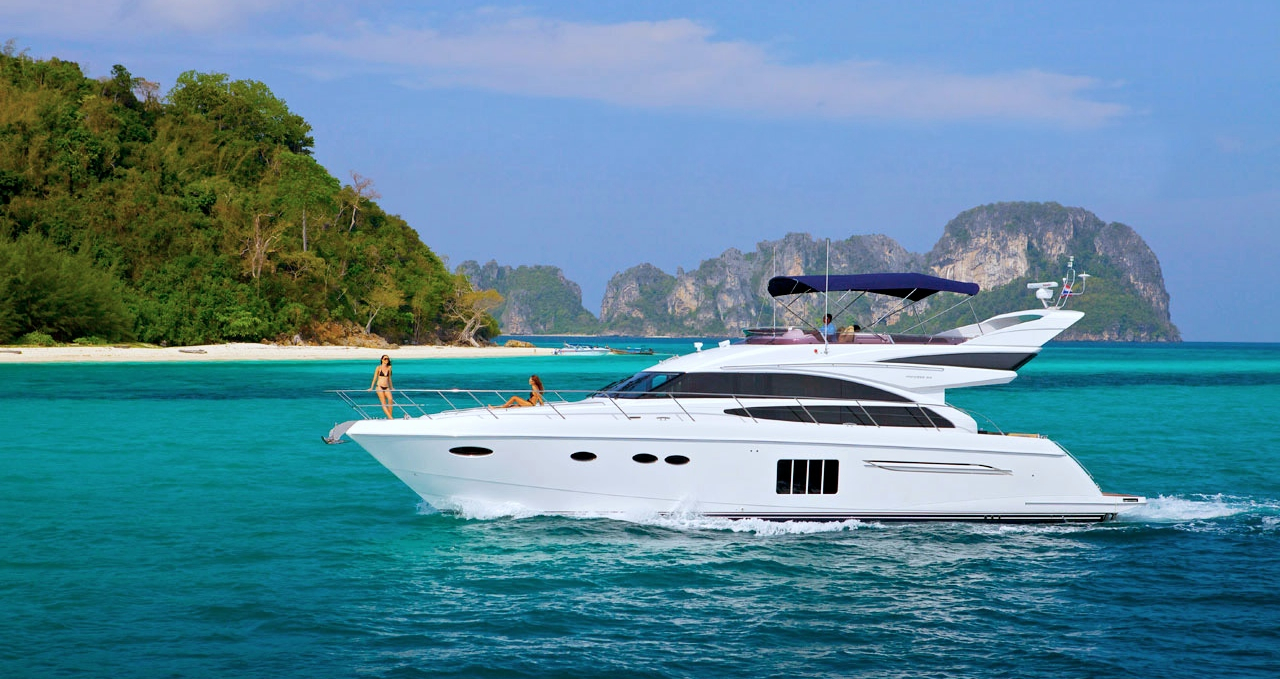
Island hopping to smaller nearby islands in the south like Phi Phi and Racha, and the nine Similan Islands in the west takes you the some of the best scuba diving and snorkeling spots in the world. The abundant waters also pose an opportunity to try recreational fishing as well.
When you’re ready to get wet, take a pick from the multitude of available water sports and beachfront activities. Jet skiing, banana boat rides, kayaking, wakeboarding, kitesurfing to name a few.
Phuket: Culture and Religion
Prevailing in the 15th century in Phuket, Theravada Buddhism, known as Southern Buddhism, has spread in neighboring countries, Thailand, Cambodia, Laos, and Myanmar. The religion has become embedded in Thais’ lives, and just like Balinese Hinduism, they have merged their animistic practices with this. Daily offerings to spirit houses and sporadic feeding to stray cats and dogs are believed to benefit Thais, attributing to longer and meaningful lives.
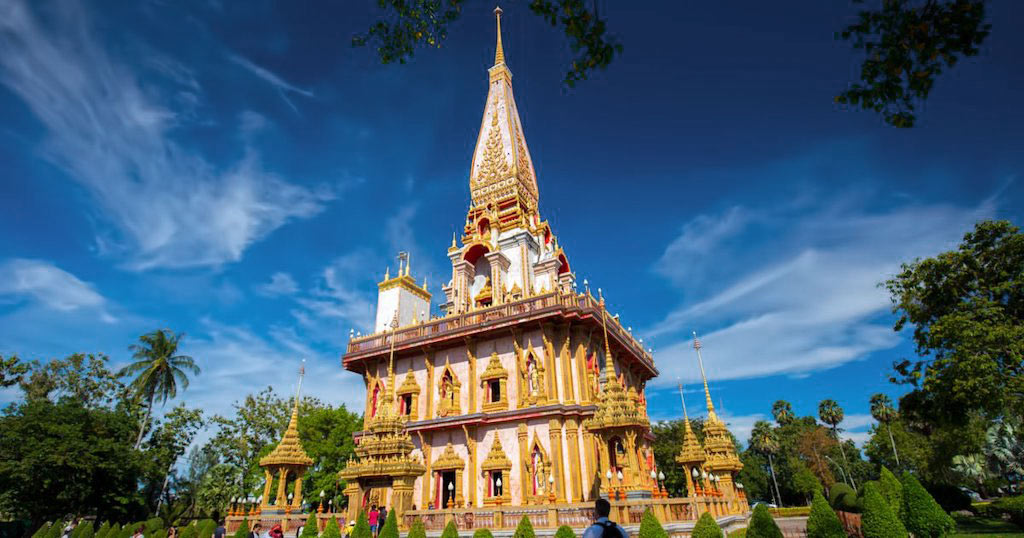
“Wats” or monasteries and temples are ubiquitous in Phuket, with orange-clad monks receiving offerings of food and gifts from devotees in exchange for prayers and blessings. Phuket has some of the most beautiful Buddhist temples that one must surely visit when there. The 19th-century built Chalong Temple, or “Wat Chaitararam,” is the largest in Phuket. Alongside the sprawling Wat Chalong complex, you can easily spot the Big Buddha of Phuket, an iconic landmark on the island. Karon Temple, or “Wat Suwan Khiri Khet,” meanwhile, is within walking distance of Karon Beach and is known for its emerald-green and golden naga or mythical golden serpents guarding the sacred grounds.
Phuket: Local Cuisine
As an island blessed with abundant marine life, fresh seafood is a staple in Phuket. You can sink your teeth into juicy morsels of squid, exquisite lobster, and other various traditional dishes with fish and other seafood as the star of every plate.
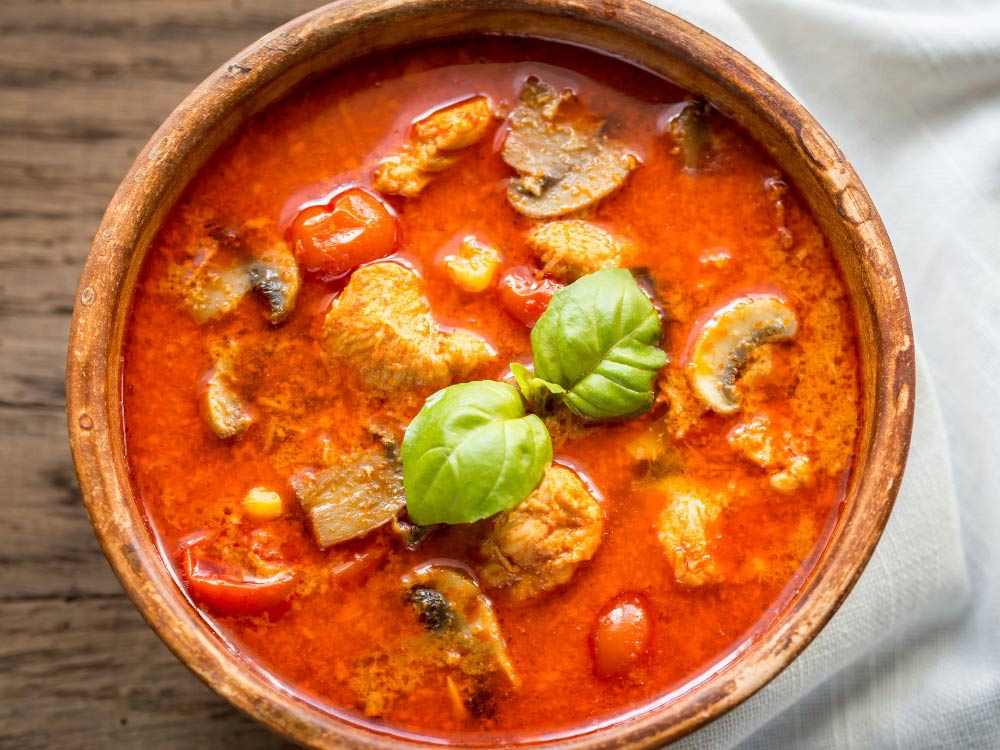
Coconuts are also an essential element in many of Phuket’s signature dishes. Coconut milk elevates any dish and is ubiquitous in both street food and fine dining. Some must-try dishes from Phuket are “khua kling moo saab,” which is a chili-laden dry curry of diced pork, “goong pad makhan,” a sweet and salty prawn stew made with palm sugar, fish sauce, and tamarind paste, and “gaeng leung yod maprao pla,” a thick gravy-like yellow fish curry.
Southern Thai cuisine reigns supreme in Phuket and tends to be much spicier than Thailand’s other regions. Indonesia and Malaysia’s heavy influence in the south are reflected in the flavors and spices Southern Thais use for their cooking, distinguished by its sharp and intense flavors.
Related article: Spotlight Spice: Thailand’s Love of Spicy Food
Bali: Key Activities
Surfing in Bali is a given. It would be difficult to talk about activities in Bali without even mentioning it. The island is among the world’s most popular surfing destinations for a reason. Its many beautiful beaches and surf spots offer a wide variety of breaks for any level of surfer, it can be surfed all year round, and its vibrant surfing culture has brought enthusiasts and professionals to the island year after year.
Speaking of beaches, one thing that sets Bali apart is its unique black sand beaches. A volcanic island that is home to two active volcanoes, Bali’s northern and eastern coasts are where these volcanic black sand beaches can be found.
Aside from surfing, truly experiencing Bali lies in immersing yourself in nature and discovering how it intertwines with its rich culture.
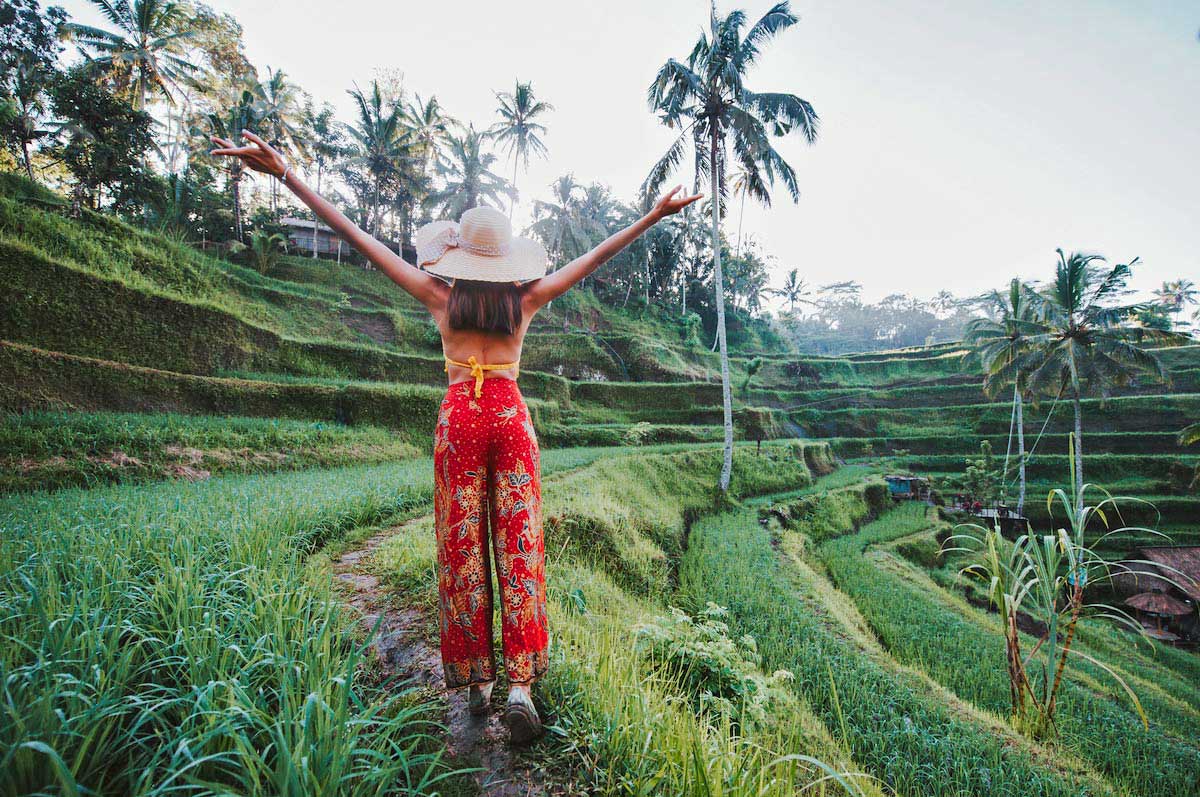
Bali’s awe-inspiring rice terraces are a sight to behold. While there are heaps of rice fields scattered all over Bali, a few truly standout. Spread across 600-acres in the Tabanan regency is Jatiluwih, A UNESCO cultural heritage site. The terraces were built without any machinery or equipment and makes use of a traditional irrigation system called subak.
There are several other places of interest in Bali that show their deep cultural and spiritual roots. The Sacred Monkey Forest in Ubud is a nature reserve and temple complex that is home to hundreds of long-tailed macaques. The Ubud Royal Palace and Bali Provincial State Museum in Denpasar are both great cultural repositories of Balinese art and history. Of course, no trip to Bali would be complete without seeing one of their revered Hindu temples.
Bali has also long been a mecca for health and wellness. For aficionados and practitioners, yoga, meditation and wellness retreats are also popular activities on the island. Related article: 10 Reasons Bali Should Be Your Next Destination
Bali: Culture & Religion
While Indonesia is mostly an Islamic country, Hinduism thrives on Bali’s island, with 93% of its inhabitants identifying as Hindu. Although Hinduism comes mostly from Indian influence due to trading and migration, the Balinese people shaped the religion, incorporating its blend of elements, such as animism and ancestor worship, fully deviating from its origins.
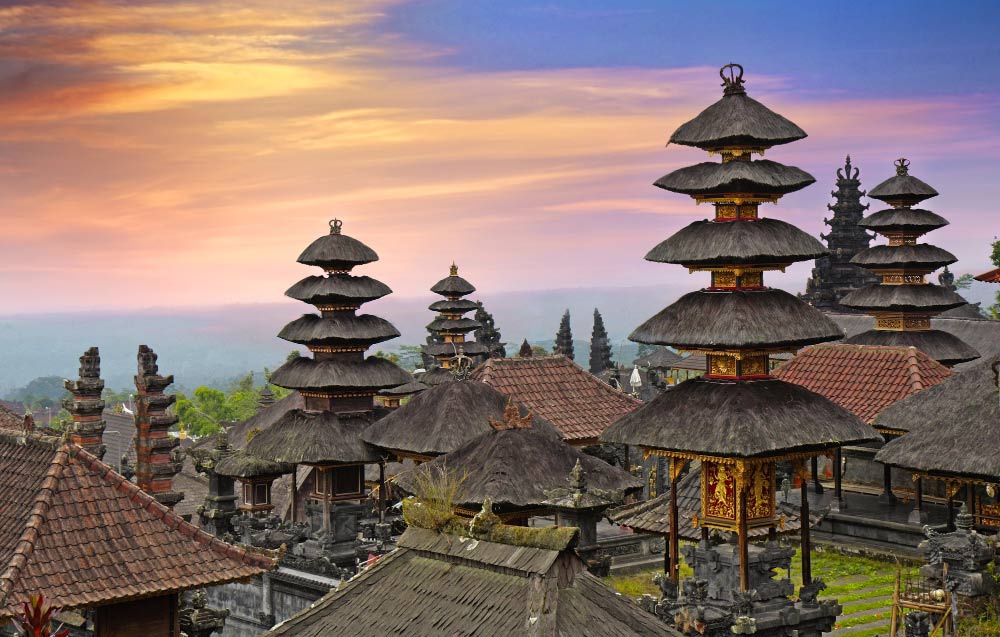
Balinese spirituality is deeply rooted in its core principle, Tri Hata Karana, or the “three reasons for prosperity or peace.” It is evident from their lifestyle down to their architecture. Travelers can get a glimpse of this as they visit one of over 20,000 temples on the island of Bali. Some notable temples of interest are the Pura Besakih or the “Mother Temple” in East Bali, the Pura Gunung Kawi located in Tamapaksiring, or Bali’s “Valley of the Kings,” and the iconic Pura Luhur Lempuyang, and is one of Bali’s most important religious places.
Bali: Local Cuisine
Part of the island’s allure is its delectable food culture. A typical Balinese meal usually contains six flavors—all accounting for a complex taste profile that makes the island cuisine stand out among the rest. The use of sweet, sour, spicy, salty, bitter, and astringent flavors promotes good health, rousing the senses in every bite. Balinese cookery features a generous amount of ginger, chilies, coconut, candlenut, palm sugar, lemongrass, musk lime, kaffir, and coriander seeds resulting in an intricate dish loved by many around the globe.
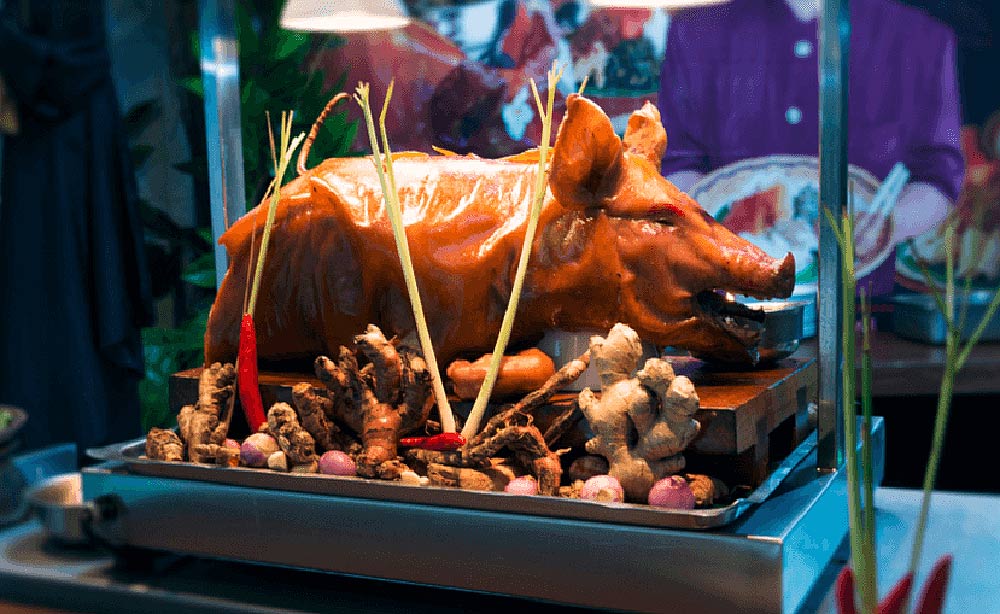
Some well-known favorites are “nasi campur” (fried rice), “ayam goreng” (fried chicken), and “bebi kecap” (pork stewed in sweet soy sauce). You can sample traditional Balinese fare almost anywhere from the local “warungs” or street-side eateries to high-end restaurants.
Food is not just for sustenance in Bali. It is deeply rooted in their beliefs, honoring the gods. “Babi guling” (sucking pig) is present during sacred ceremonies, such as a baby’s three-month blessing or an adolescent’s tooth filing, and even weddings.
Related article: A Taste of Balinese Cuisine


